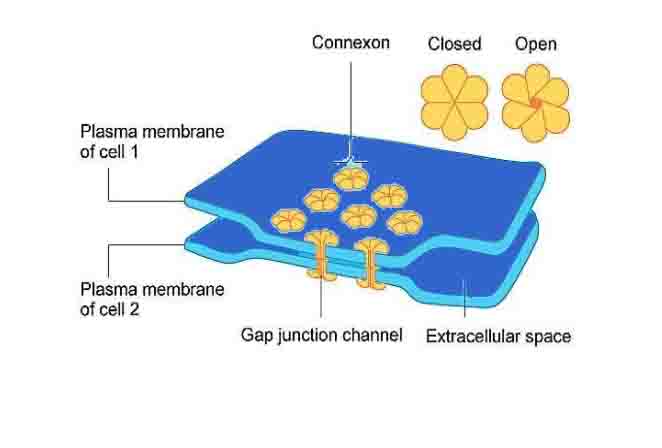Gap Junction Definition
An adjacent cell is connected through a protein channel at a gap junction. Molecules, ions, and electrical signals pass between these channels that connect the cytoplasm of each cell. Almost all cells within the body have gap junctions as they are located between all cells that touch one another directly.
Sperm cells and red blood cells are exceptions, since they move around and do not usually come into close contact with other cells. Platodesmata connect plant cells instead of gap junctions, which are only found in animal cells.
Function of Gap Junctions
In order to allow molecules to pass from one cell to another, gap junctions connect cells. As a result, molecules can enter neighboring cells directly without going through the extracellular fluid surrounding the cells, allowing cell-to-cell communication.
To develop in the right place at the right time, neighboring cells must communicate with one another during embryonic development, during which gap junctions are especially important. A blocked gap junction prevents embryos from developing normally.
Cells are chemically or electrically coupled through gap junctions. The cells are linked together and can transfer molecules between them for use in reactions. At gap junctions, cells receive the signal to contract the heart muscle at the same time. In addition to the well-known chemical synapses from which neurotransmitters are released, neurons can also be connected by electrical synapses.
Disease or injury causes a cell to send out signals through its gap junctions as it dies. Cells nearby can be killed by these signals even if they are not infected or injured. It is called the “bystander effect”, since the nearby cells are innocent bystanders who become victims. As a result of gap junctions, adjacent cells may sometimes die during development.
As well as sending therapeutic compounds between cells, gap junctions are being studied as a method of delivering therapeutic drugs.
Gap Junction Structure
Proteins called connexins make up gap junctions in vertebrates. A gap junction in invertebrates is constructed of innexin proteins, which are not related to connexin proteins but act in a similar way.) A connexon is formed by groups of six connexins, and a channel is formed by combining two connexons.
There are also channels made up of pannexin proteins in gap junctions. Pannexins are relatively unknown; they originally were thought to form channels within cells, not between cells. An area known as a gap junction plaque contains hundreds of channels connected by a gap junction. Plaques are masses of proteins.
Other Cell Junctions
Tight junctions and anchoring junctions are the other types of cell junctions in vertebrates. A cytoskeleton-connected protein anchors cells at anchoring junctions. Often found in epithelia, which are cells that line organs and cover the surface of the body, tight junctions are areas where cells are tightly bound together.
Plant cells do not have gap junctions, but they do have plasmodesmata, which connect the cytoplasm of two adjacent cells. Despite the fact that plant cells have thick cell walls, placodesmata are structured differently from gap junctions.
Their function, however, is essentially the same. Through their plasmodesmata, plant cells can communicate with each other and regulate the passage of small molecules.
Related Biology Terms
- Anchoring junction – A type of cell junction in which cells are connected by a mass of proteins.
- Tight junction – A type of cell junction where cells are tightly bonded to form a barrier.
- Plasmodesmata – Channels that connect the cytoplasm of adjacent plant cells.
- Connexin – A family of proteins that makes up gap junctions.

